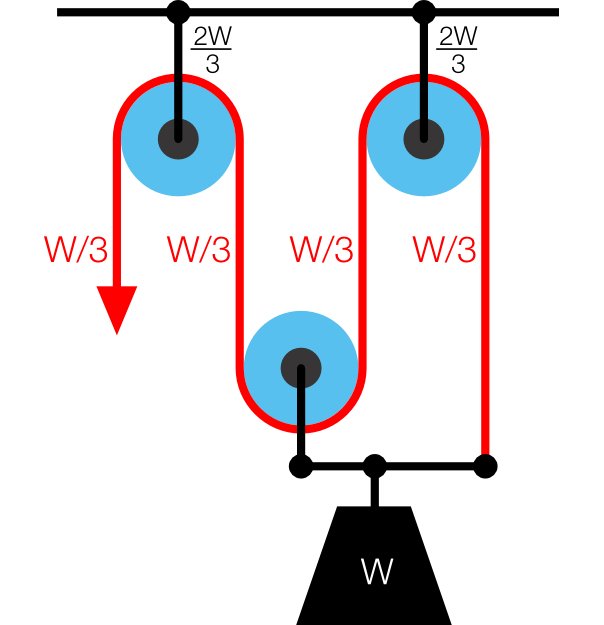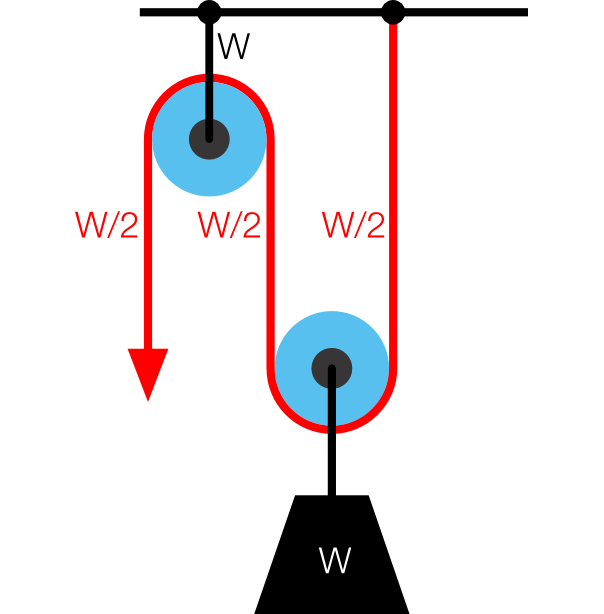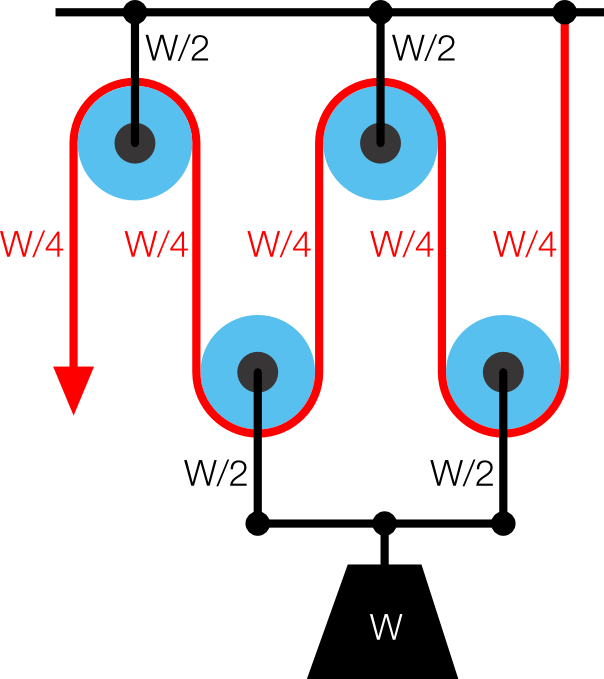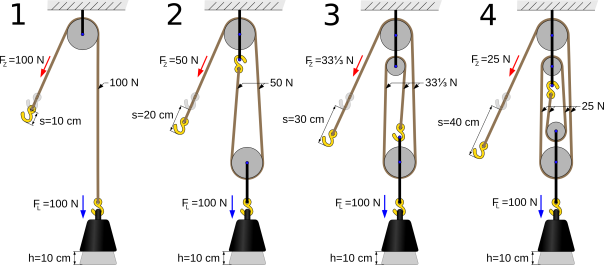In its simplest implementation, a pulley simply turns a force in one direction into a force in another direction. This might be useful if it’s easier to apply a force in one direction than the other (e.g. to pull downwards rather than push upwards).
A pulley really comes into its own when it is combined with another pulley to create a system known as a block and tackle, allegedly invented by Archimedes in the third century BC.
The simplest block and tackle, the gun tackle, uses two pulleys, which are usually mounted above one another (for clarity, they are shown separated in the diagram below).
The load (W) is shared between the tension in the rope and the mount that attaches the block and tackle to the ceiling, and thus you only have to pull with a force equal to half the weight in order to lift it. However, you will have to pull the rope twice as far and thus the conservation of energy is not violated (lifting a one hundred newton weight through one metre is the same amount of work as applying a fifty newton force over two metres).
The Luff tackle uses three pulleys in theory, but this is usually accomplished by running a rope over the top pulley twice. In this case the force required to lift a weight is reduced to one-third of its actual value, but again you have to pull further: three times the height required in this case.
A Luff tackle, shown separated.
The double tackle uses four pulleys, but similar to the Luff tackle, this is usually accomplished by running the rope twice over both pulleys.
In theory, this process can be continued indefinitely (one is reminded of Archimedes’ alleged remark: “Give me a place to stand and I will move the Earth“) but it quickly becomes impractical to do so, as the length of rope required, and the distance pulled through become unmanageable.
A block and tackle can also be created using pulleys of different sizes.





